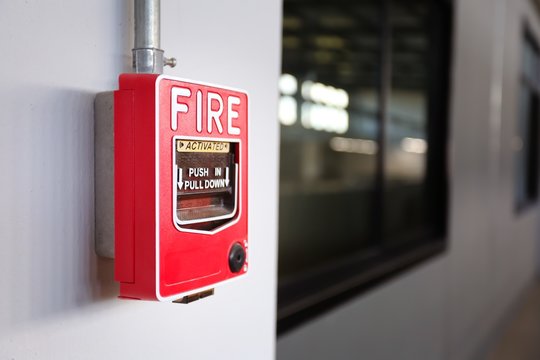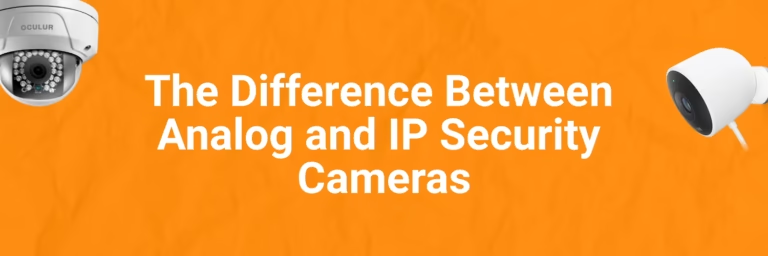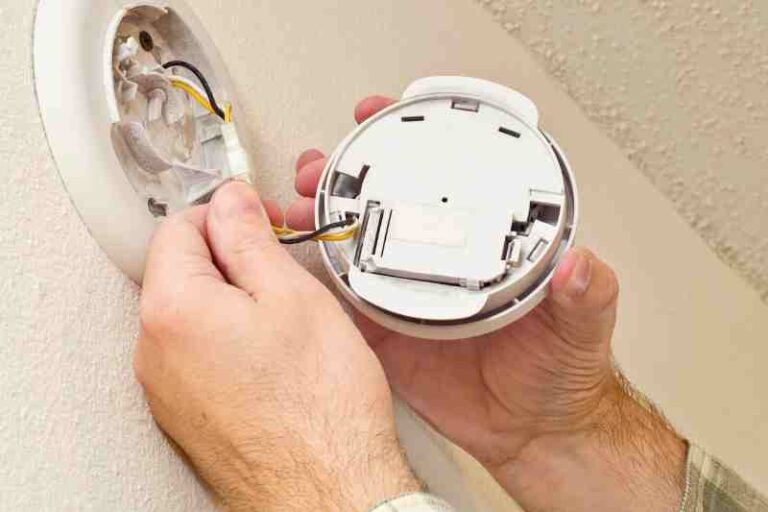The Different Types of Fire Alarm Systems: Which One Is Right for Your Building?
Introduction
Fire alarm systems are essential for safeguarding your home or business against the threat of fire. Choosing the right type of fire alarm system is crucial for ensuring your building’s safety. In this article, we’ll explore the various types of fire alarm systems, their features, and help you determine which one is best suited for your needs.
1. Conventional Fire Alarm Systems
- How It Works: Conventional fire alarm systems use a simple circuit to monitor different zones within a building. When a sensor detects smoke or heat in a zone, the system alerts everyone in the building.
- Best For: Small buildings with fewer rooms or areas. These systems are more affordable but offer less precision in locating the source of the fire.
- Advantages:
- Easy and cost-effective installation.
- Ideal for simple layouts and smaller spaces.
- Disadvantages:
- Can only identify the general area of the fire.
- Not suitable for larger or more complex buildings.
2. Addressable Fire Alarm Systems
- How It Works: Addressable systems are more advanced. Each device (smoke or heat detector) is assigned a unique address, allowing the system to pinpoint the exact location of a fire. This gives faster and more precise information to building occupants and fire responders.
- Best For: Medium to large buildings such as offices, hotels, or schools where accurate location detection is critical.
- Advantages:
- Exact location of the fire is identified.
- Scalable for larger buildings and complex setups.
- Provides more detailed information to emergency responders.
- Disadvantages:
- More expensive compared to conventional systems.
- Requires more complex installation and maintenance.
3. Wireless Fire Alarm Systems
- How It Works: Wireless fire alarm systems connect all components (detectors, alarms, and control panels) via radio frequency signals instead of wiring. These systems are flexible and can be easily expanded or moved.
- Best For: Older buildings, temporary structures, or any environment where running wires is difficult or impractical.
- Advantages:
- Easier installation, especially in existing buildings.
- No need for invasive wiring, making it cost-effective in some cases.
- Ideal for temporary buildings or locations under renovation.
- Disadvantages:
- Limited range; may not be as reliable in large areas as wired systems.
- Potential interference from other wireless devices.
4. Smart Fire Alarm Systems
- How It Works: Smart fire alarm systems are connected to the internet and can send notifications to your smartphone, or even integrate with other smart home or business systems. Some systems also include video surveillance integration to assess the situation remotely.
- Best For: Homes, smart offices, or tech-savvy businesses that want remote monitoring and real-time alerts.
- Advantages:
- Instant alerts sent to your phone, even when you are not on-site.
- Can be integrated with other smart devices, such as lighting or security systems.
- Often comes with additional features, like self-diagnostics and troubleshooting.
- Disadvantages:
- Higher initial cost compared to traditional systems.
- Requires stable internet connectivity for full functionality.
5. Hybrid Fire Alarm Systems
- How It Works: Hybrid systems combine the benefits of both wired and wireless components. They allow some areas to have wireless detectors, while others are hardwired, offering a balance of flexibility and reliability.
- Best For: Buildings that have a combination of old and new infrastructure, where certain zones require wireless coverage and others need hardwired reliability.
- Advantages:
- Flexibility to adapt to different areas within the same building.
- Reliable and scalable.
- Disadvantages:
- Requires careful planning to integrate both systems.
- Can be more expensive and complex to install than standard systems.
6. Aspirating Smoke Detection Systems (ASDs)
- How It Works: ASDs work by continuously drawing air through a network of pipes to detect smoke particles in the air. These systems provide early warning even before visible smoke appears.
- Best For: High-risk areas, such as server rooms, clean rooms, or places with sensitive equipment that could be affected by smoke.
- Advantages:
- Extremely sensitive, detecting smoke at very low concentrations.
- Ideal for areas with strict safety requirements.
- Disadvantages:
- More expensive and complex installation.
- Requires ongoing maintenance and calibration.
7. Heat Detection Systems
- How It Works: Heat detectors trigger alarms when the temperature exceeds a pre-set threshold. These systems are best suited for environments where smoke detectors might not be as effective (e.g., kitchens, garages).
- Best For: Locations where smoke detectors could cause false alarms, such as kitchens or manufacturing areas.
- Advantages:
- Less prone to false alarms compared to smoke detectors.
- Ideal for areas with high humidity, dust, or grease.
- Disadvantages:
- Not as sensitive as smoke detectors and may only detect fires once they are more developed.
Choosing the Right System for Your Building
- For Small Buildings or Homes: Conventional or wireless fire alarm systems are typically sufficient and cost-effective.
- For Large or Complex Buildings: Addressable or hybrid systems offer better reliability and faster response times.
- For High-Risk Areas: Aspirating smoke detectors or heat detection systems should be considered.
- For Smart Homes or Tech-Savvy Businesses: A smart fire alarm system offers convenience, remote monitoring, and integration with other smart devices.
Conclusion
Choosing the right fire alarm system is a critical decision that depends on the size of your building, the risks involved, and your budget. Whether you opt for a conventional, addressable, or smart system, the most important factor is ensuring that your building is adequately protected. Work with a professional fire safety company to assess your needs and install the right system that provides peace of mind and safety for years to come.







